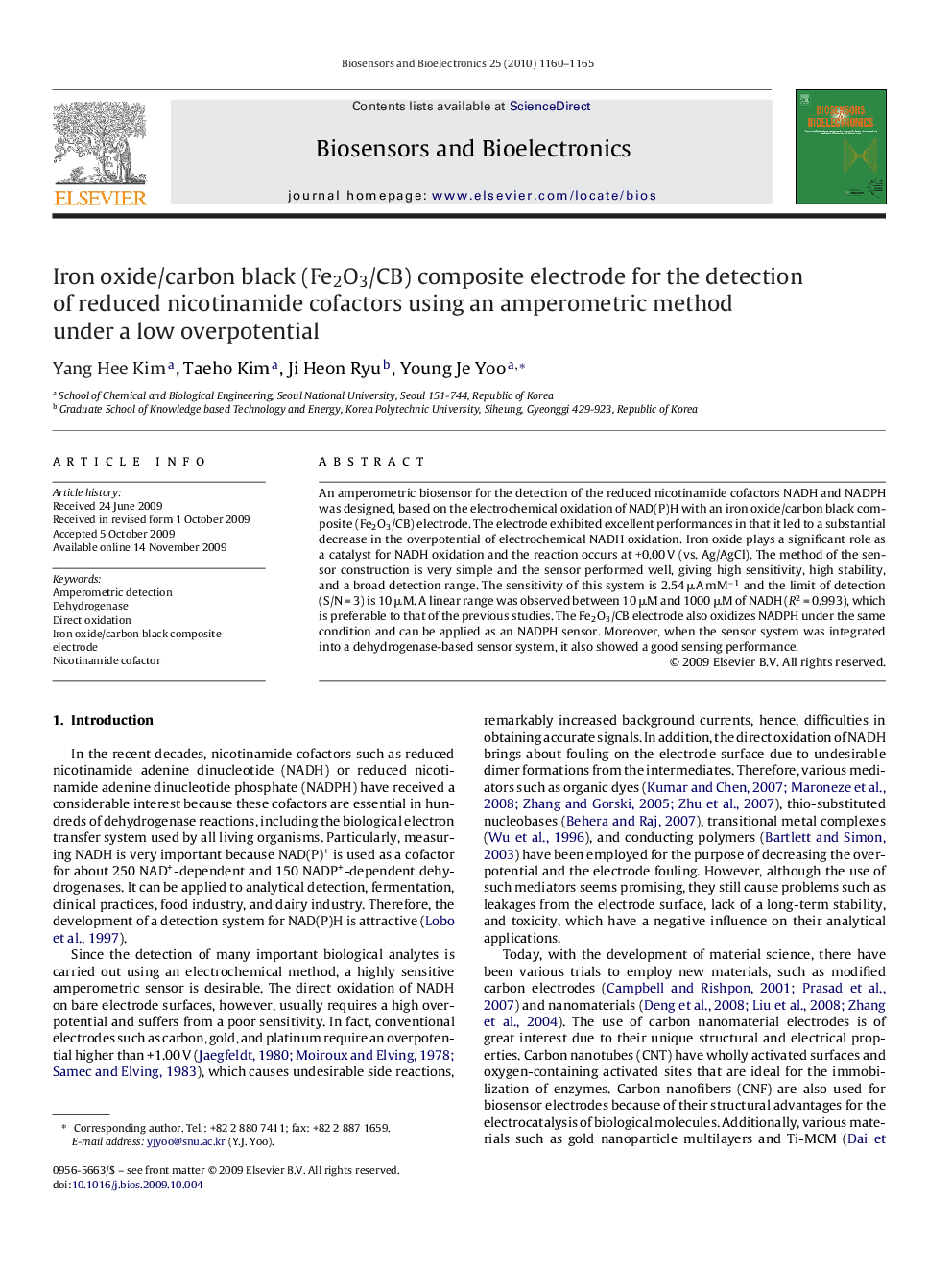| Article ID | Journal | Published Year | Pages | File Type |
|---|---|---|---|---|
| 868812 | Biosensors and Bioelectronics | 2010 | 6 Pages |
An amperometric biosensor for the detection of the reduced nicotinamide cofactors NADH and NADPH was designed, based on the electrochemical oxidation of NAD(P)H with an iron oxide/carbon black composite (Fe2O3/CB) electrode. The electrode exhibited excellent performances in that it led to a substantial decrease in the overpotential of electrochemical NADH oxidation. Iron oxide plays a significant role as a catalyst for NADH oxidation and the reaction occurs at +0.00 V (vs. Ag/AgCl). The method of the sensor construction is very simple and the sensor performed well, giving high sensitivity, high stability, and a broad detection range. The sensitivity of this system is 2.54 μA mM−1 and the limit of detection (S/N = 3) is 10 μM. A linear range was observed between 10 μM and 1000 μM of NADH (R2 = 0.993), which is preferable to that of the previous studies. The Fe2O3/CB electrode also oxidizes NADPH under the same condition and can be applied as an NADPH sensor. Moreover, when the sensor system was integrated into a dehydrogenase-based sensor system, it also showed a good sensing performance.
